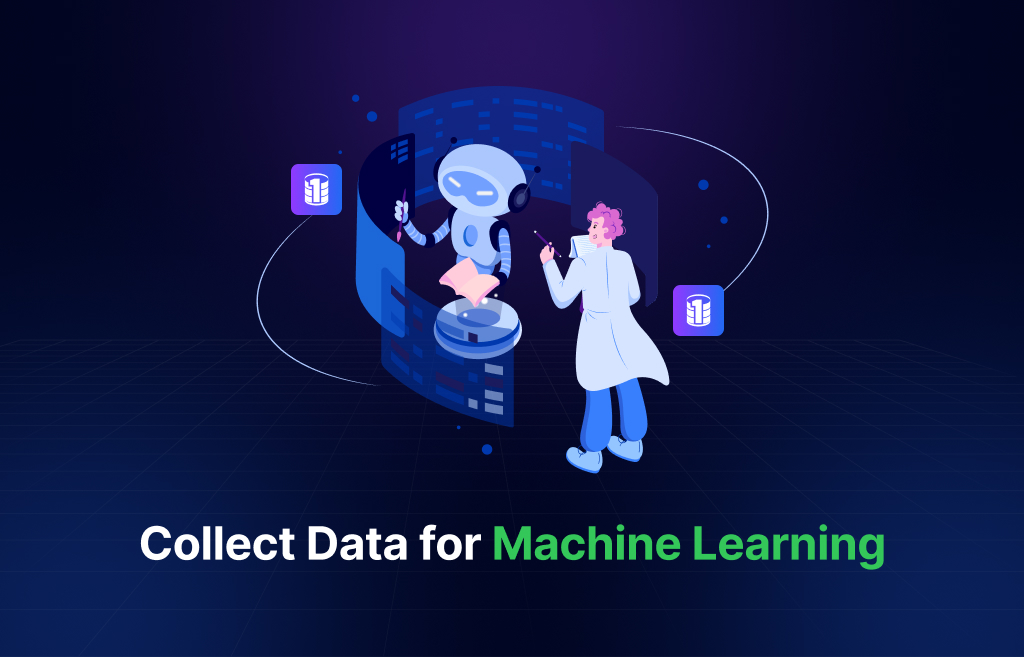Machine learning (ML) is only as good as the data that powers it. High-quality data is the foundation of accurate models, whether you’re working on AI automation, predictive analytics, or deep learning. But how do you collect, clean, and generate datasets for machine learning?
This guide will walk you through the entire data collection process, from acquiring raw data to preparing high-quality datasets.
Step 1: Understanding Your Data Needs
Before collecting data, ask yourself:
✅ What problem is the ML model solving?
✅ What type of data (structured, unstructured, text, image, audio, etc.) is required?
✅ How much data is needed for training and validation?
✅ Where can I legally and ethically obtain this data?
The quality, quantity, and diversity of data will directly impact model performance.
Step 2: Methods of Data Collection
1️⃣ Web Scraping & APIs
✅ Extract real-world data from websites, forums, and social media.
✅ Use tools like OneScraper, BeautifulSoup, and Scrapy.
✅ Many websites offer APIs (Twitter API, Google Maps API) to access structured data.
🔹 Best for: Collecting text, reviews, and business information.
2️⃣ Public Datasets & Open Data Sources
✅ Use open datasets from government websites, Kaggle, Google Dataset Search, and UCI ML Repository.
✅ Great for image classification, NLP, and predictive analytics.
✅ High-quality, clean, and structured data is readily available.
🔹 Best for: Healthcare, finance, and scientific research projects.
3️⃣ User-Generated Data & Surveys
✅ Collect data through questionnaires, surveys, and customer feedback forms.
✅ Allows businesses to gather user preferences, opinions, and trends.
✅ Tools like Google Forms, Typeform, and SurveyMonkey can help.
🔹 Best for: Sentiment analysis, recommendation systems, and behavioral studies.
4️⃣ Sensor Data & IoT Devices✅ Gather real-time data from smart sensors, cameras, and IoT devices.
✅ Used in self-driving cars, healthcare monitoring, and industrial automation.
🔹 Best for: Time-series data, predictive maintenance, and real-world monitoring.
5️⃣ Synthetic Data Generation
✅ AI-powered tools create synthetic datasets when real data is scarce.
✅ Helps balance datasets and reduce bias.
✅ GANs (Generative Adversarial Networks) and Data Augmentation techniques are popular.
🔹 Best for: Image recognition, fraud detection, and medical AI.
Step 3: Data Cleaning & Preprocessing
Raw data is often messy, incomplete, or inconsistent. Cleaning it ensures better ML model performance.
✅ Remove duplicates – Avoid redundant data points.
✅ Handle missing values – Use imputation techniques (mean, median, mode).
✅ Normalize & scale data – Standardize numerical values for better accuracy.
✅ Convert categorical data – Use One-Hot Encoding or Label Encoding.
🔹 Tools for data preprocessing: Pandas, NumPy, Scikit-learn.
Step 4: Data Labeling & Annotation
Supervised learning requires labeled data. If your dataset lacks labels, you need human annotation or AI-assisted labeling.
✅ Manual Labeling – Use Amazon Mechanical Turk or Labelbox.
✅ Semi-Supervised Learning – Combine labeled and unlabeled data for efficiency.
✅ AI-Assisted Labeling – Use tools like Google AutoML or CVAT.
🔹 Best for: Image recognition, speech-to-text models, and NLP applications.
Step 5: Data Storage & Management
Once collected, data should be stored securely and easily accessible.
✅ Databases: MySQL, PostgreSQL, MongoDB.
✅ Cloud Storage: AWS S3, Google Cloud Storage.
✅ Data Versioning: Use DVC or Delta Lake to track changes.
🔹 Best for: Keeping datasets organized and scalable.
Final Thoughts
Collecting high-quality data is the foundation of every successful ML project. By using a combination of web scraping, APIs, public datasets, user input, and AI-generated data, you can create powerful training datasets for accurate and efficient models.
👉 Need to collect data fast? Try OneScraper to automate web data collection for machine learning! 🚀
